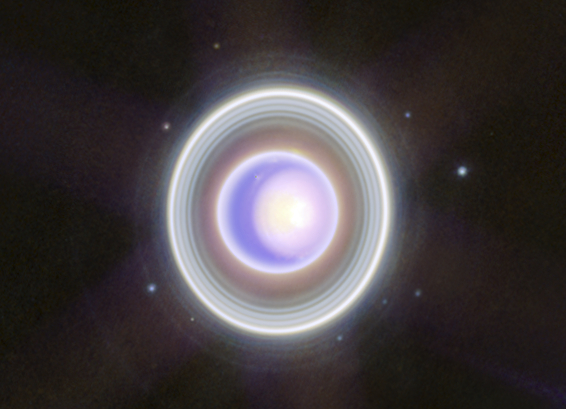A festive new image from the James Webb Space Telescope has been released, showing the stunning rings of Uranus. Although these rings are hard to see in the visible light wavelength — which is why you probably don’t think of Uranus as having rings like Saturn — these rings shine out brightly in the infrared wavelength that Webb’s instruments operate in.
The image was taken using Webb’s NIRCam instrument and shows the rings in even more detail than a previous Webb image of Uranus, which was released earlier this year.

This new view of Uranus adds an additional wavelength to the previous image, which helps show even more of the rings, including the rarely-seen Zeta ring, which is a very faint ring of material close to the planet’s surface — only a few hundred kilometers above the clouds. The image also shows several of the planet’s 27 moons, some of which sit outside the rings and some even within the rings.
The image also reveals features on the planet’s surface, particularly its polar ice cap. The dot of bright white is the center of the ice cap, while the darker area around this is the bottom of the cap. We get this unusual view of Uranus with its pole almost toward us because of the planet’s strange rotation pattern. It is extremely titled, with the planet almost entirely tipped over onto its side relative to its orbit, which means that during the long summer, the sun shines almost continuously onto its north pole.
This summer season in the northern hemisphere lasts an incredible 21 years and is thought to affect the planet’s weather as one pole experiences so much sun while the other is in darkness. Uranus is host to dramatic storms, which are also visible in the image as bright dots along the bottom edge of the polar ice cap.
Editors' Recommendations
- James Webb telescope peers at the atmosphere of a rocky hell world
- James Webb captures the edge of the beautiful Horsehead Nebula
- The expansion rate of the universe still has scientists baffled
- Three tiny new moons spotted orbiting Uranus and Neptune
- This famous supernova remnant is hiding a secret



